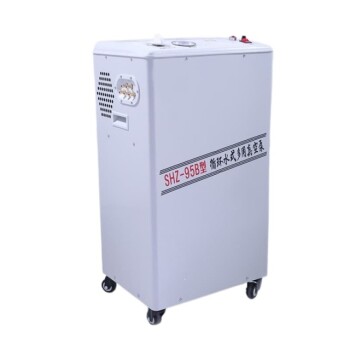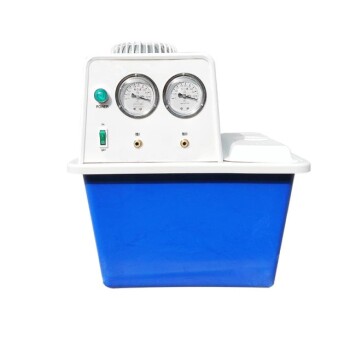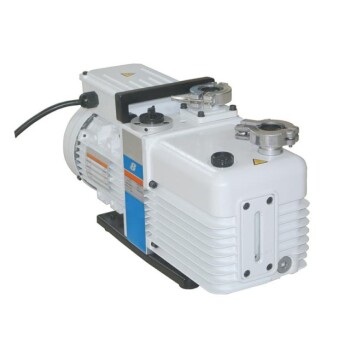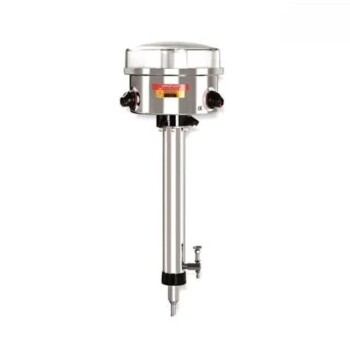Vacuum pumps, particularly lab vacuum pumps, are critical components in various scientific and industrial processes. However, they are prone to several issues that can affect their performance and longevity. Common problems include contamination, overheating, mechanical wear, and improper operation. Understanding these potential failures is essential for maintaining the efficiency and reliability of vacuum pumps in laboratory settings.
Key Points Explained:

-
Contamination:
- Oil Contamination: In oil-sealed vacuum pumps, oil contamination is a frequent issue. Over time, the oil can degrade, leading to reduced pump efficiency and potential damage to internal components. Regular oil changes and using high-quality vacuum pump oil can mitigate this problem.
- Particulate Contamination: Dust, debris, and other particulates can enter the pump, causing abrasion and clogging. Using appropriate filters and ensuring a clean operating environment can help prevent this.
-
Overheating:
- Cooling System Failure: Overheating can occur if the cooling system fails, leading to thermal stress and potential damage to the pump. Ensuring that the cooling system is functioning correctly and using non-conductive coolants can prevent overheating.
- Excessive Load: Operating the pump beyond its capacity can cause overheating. It's crucial to operate the pump within its specified limits and avoid overloading it.
-
Mechanical Wear:
- Wear and Tear: Over time, mechanical components such as bearings, seals, and vanes can wear out, leading to decreased performance and eventual failure. Regular maintenance and timely replacement of worn parts are essential.
- Vibration and Misalignment: Excessive vibration or misalignment of components can accelerate wear. Proper installation and alignment can help reduce these issues.
-
Improper Operation:
- Incorrect Startup Procedure: Starting the pump without following the correct procedure, such as pre-evacuating the system, can cause damage. It's important to follow the manufacturer's guidelines for startup and operation.
- Inadequate Back Pressure: Operating the pump with inadequate back pressure can lead to issues such as oil backstreaming. Ensuring the correct back pressure is maintained is crucial for proper operation.
-
Gas Tightness Issues:
- Leaks: Leaks in the vacuum system can significantly reduce pump efficiency. Regular leak checks and proper sealing of connections can help maintain system integrity.
- Gas Ballast Problems: The gas ballast valve, which helps remove condensable vapors, can fail or become clogged. Regular inspection and cleaning of the gas ballast valve are necessary.
-
Electrical Issues:
- Power Supply Problems: Inconsistent or incorrect power supply can cause operational issues. Ensuring a stable and appropriate power supply is essential.
- Electrical Connections: Faulty electrical connections can lead to intermittent operation or failure. Regular inspection and maintenance of electrical connections can prevent these issues.
By understanding and addressing these potential problems, users can ensure the reliable and efficient operation of their lab vacuum pumps. Regular maintenance, proper operation, and timely troubleshooting are key to minimizing downtime and extending the lifespan of vacuum pumps in laboratory settings.
Summary Table:
| Issue | Causes | Prevention Tips |
|---|---|---|
| Contamination | Oil degradation, particulate buildup | Use high-quality oil, change oil regularly, install filters, maintain clean environment |
| Overheating | Cooling system failure, excessive load | Ensure proper cooling, operate within capacity limits, use non-conductive coolants |
| Mechanical Wear | Wear and tear, vibration, misalignment | Regular maintenance, timely part replacement, proper installation and alignment |
| Improper Operation | Incorrect startup, inadequate back pressure | Follow manufacturer guidelines, maintain correct back pressure |
| Gas Tightness Issues | Leaks, gas ballast valve problems | Perform regular leak checks, inspect and clean gas ballast valve |
| Electrical Issues | Power supply problems, faulty connections | Ensure stable power supply, inspect and maintain electrical connections |
Ensure your lab vacuum pump operates flawlessly—contact our experts today for maintenance tips and solutions!











